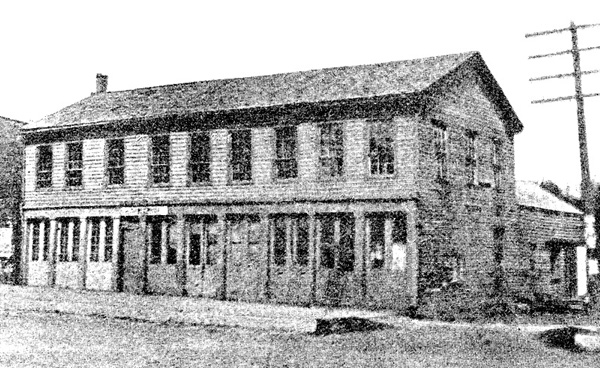Saturday Postcard 204: Iowa City’s First Capitol
The
Iowa legislature first met in Iowa City in 1841 in this building – called
Butler’s Capitol in deference to its
public-spirited owner – located facing Washington Street just east of
Clinton Street. This image was recorded
after it had been moved in 1856 to the east side of Dubuque a half-block south
of College Street.
|
By Bob Hibbs Strong winds drove the cold like a knife as sleet and snow pelted weary travelers bound to Iowa City for the fourth Iowa legislative assembly scheduled to open the following day in two-year-old Iowa City.
Wind that Sunday of Dec. 5, 1841, was “sufficient almost to blow the hair off one’s head,” came a report from among the 39 legislators and nearly as many other officials, assistants and interested citizens who had journeyed to the new seat of Iowa territorial government.
Excitement reverberated among the 750 Iowa City residents, who felt all was ready despite the fact Old Capitol was only an open shell of 30-foot-high limestone walls on the Capitol Grounds, now the heart of the University of Iowa called Pentacrest. A permanent roof wouldn’t be in place for nearly a year.
An alternative was ready, though, in a new two-story wood-frame structure with a 60-foot front facing south toward Washington Street beginning some 32 feet east of Clinton Street. It was 30 feet deep and divided into separate meeting rooms for the 26-member House and 13-member Council upstairs, plus smaller committee rooms and several little offices at ground level.
Built entirely of wood, it lacked plumbing, electricity, rest rooms and central heating as was typical of the era. Just months before the wood had been live timber which had been laboriously cut by hand into dimension lumber since no local saw mill was available.
The structure, known from its inception as Butler’s Capitol, became a community landmark. For a decade after its initial use, local businesses advertised their locations in juxtaposition to it. In 1856 it was moved to a site now in the bar area of the downtown Sheraton Hotel, where it became the disreputable City Hotel, also known for a time as the Hutchinson House.
Its owner was 41-year-old Walter Butler, one of only a half-dozen men who had purchased more than two lots during the initial public sales of Iowa City lots in 1839. He paid the minimum $300 price for the lot on which he already had erected a hotel facing Clinton Street a bit more than half a block south of Iowa Avenue, now addressed as 18, 20, 22 and 24 S. Clinton St.
In 1840 he paid $800 for the adjoining corner lot to the south at Clinton and Washington streets, now addressed as 26, 28, 30 and 32 S. Clinton. On this second lot he built his capitol, essentially an annex to his hotel to the north. These two lots, each 80 feet by 150 feet, have a present-day value exceeding $10 million and serve more than a dozen businesses as the southwest quarter of the block across Clinton Street east of Schaeffer Hall.
Butler was born in 1800 in Tennessee, settled as a young man in Illinois, and then brought his wife and family to Iowa City in 1839 with the initial rush of settlement. He was an instant hit with fellow citizens, elected sheriff in 1842, and offered as a reference with historic giants like Chauncey Swan, Samuel Trowbridge and Jesse Williams.
The Coralville dam was built on his land, which extended upstream along the Iowa River just beyond the site of today’s Butler Bridge which provides passage from Iowa City north to the River Heights neighborhood and Coralville Reservoir. An early marina there was known as Butler’s Landing.
Butler also owned the land now serving as City Park. He sold it to Walter Terrell in 1840 so he could pay for the second downtown lot. In 1844 on a part of his new site, Terrell opened a highly-successful mill. The spot now is beneath North Dubuque Street in front of Mayflower Residence Hall.
Butler’s sudden death Jan. 13, 1844, at age 43, shocked the community. It lost its sheriff, a prominent public-spirited citizen who might have cast a huge shadow across Iowa City history.
Next Saturday: Activities inside Butler’s Capitol.
Bob Hibbs collects local postcards and researches history related to them.
|
